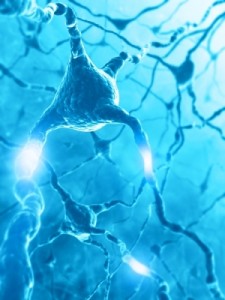A friend of mine asked me a pointed question the other night. I mentioned that I had just finished a big project that had involved more than 1,000 PowerPoint slides, when she smirked and said, “And this from the guy who says we should all speak naked?”
She thought she had nailed me in a contradiction, but I’m not anti-PowerPoint at all. I think it is a tremendously useful tool, but like any other tool it can be used well or badly. A hammer can be used to build houses for the homeless or to hit people on the head (I seem to be using a lot of hammer analogies lately).
What I am is anti audience abuse. Far too often, speakers abuse their audiences with PowerPoint by directly presenting reams of complex data. They abuse their audiences by using it, and other tools, to cover for their own laziness and lack of preparation; by presenting their notes instead of learning their material.
PowerPoint can’t give your presentation for you. It’s a poor substitute for a dynamic speaker with a clear point to make and the skills to get that point across, but it is brilliant at reinforcing your point.
 Our thoughts are made up of cascading waves of neurons firings in our brains. These waves spread along a virtually infinite number and combination of connections triggering fragmentary sensations, sounds and images that our brains then piece together into coherent thoughts. Each time such a cascade occurs in a specific way, those connections are made a bit stronger.
Our thoughts are made up of cascading waves of neurons firings in our brains. These waves spread along a virtually infinite number and combination of connections triggering fragmentary sensations, sounds and images that our brains then piece together into coherent thoughts. Each time such a cascade occurs in a specific way, those connections are made a bit stronger.
I’m no neuroscientist, so I’ll go no deeper than that into the biology, but what it tells us as speakers is that we have an opportunity to use biology to our advantage. We can make our message more understandable, more powerful and more memorable by giving our brains as many connections as possible to the ideas we are presenting.
One of the great triumphs of human evolution is the ability to think abstractly, but it’s a tenuous beachhead. The older parts of our brains that process our sensory impressions of the tangible world and the primitive emotions they trigger are far more robust and reliable. They are able to handle more data, with better recall.
That’s why you can perhaps recall quite clearly how hot your high school Spanish teacher looked in her yellow sweater and the way her thick, glossy, black hair bobbed and danced as she wrote on the blackboard, yet you can’t recall more than about 1% of the verb conjugations she repeatedly, and patiently, explained. Or maybe that’s just me.
We just are better at remembering the real, the concrete, the tangible than we are the abstract. To the extent that we can link our abstract ideas to the tangible, we make it easier for our audiences to understand and remember our abstract messages. In practical terms, this means linking our abstract ideas to images, stories, analogies, acronyms and actions that our brains are designed to more easily recall.
PowerPoint gives us the ability to present pictures, graphics and the visual representations of our key words and ideas as we say them. Each new mode of presentation triggers new and different neural cascades that create new connections to the information and strengthens the connections that already exist.
That’s what PowerPoint does well. It reinforces our words, deepens the connection to the message and makes it easier to understand and remember. And that’s what I hope I was doing in my project.







{ 0 comments… add one now }